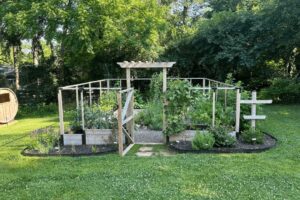
[et_pb_section fb_built=”1″ admin_label=”section” _builder_version=”4.16″ da_disable_devices=”off|off|off” global_colors_info=”{}” da_is_popup=”off” da_exit_intent=”off” da_has_close=”on” da_alt_close=”off” da_dark_close=”off” da_not_modal=”on” da_is_singular=”off” da_with_loader=”off” da_has_shadow=”on”][et_pb_row admin_label=”row” _builder_version=”4.16″ background_size=”initial” background_position=”top_left” background_repeat=”repeat” hover_enabled=”0″ global_colors_info=”{}” sticky_enabled=”0″][et_pb_column type=”4_4″ _builder_version=”4.16″ custom_padding=”|||” global_colors_info=”{}” custom_padding__hover=”|||”][et_pb_text _builder_version=”4.27.0″ _module_preset=”default” text_text_color=”#000000″ link_font=”|700|||on|||#000000|” link_text_color=”#000000″ hover_enabled=”0″ global_colors_info=”{}” header_2_font_size_last_edited=”on|phone” header_2_font_size_phone=”24px” header_2_line_height=”1.5em” sticky_enabled=”0″]
Introduction
Many of us have fond memories of sunny summer gardens brimming with tomatoes, zucchini, and other homegrown delights. But let me let you in on a little secret: the magic of gardening doesn’t have to end with the warm weather of summer. As the cool breeze of autumn begins to blow, a whole new world of gardening opportunities unfolds. Fall gardening is an often overlooked yet rewarding extension of your growing season, bringing fresh greens and veggies to your table without the heat stress of summer.
As the days grow shorter and your summer crops begin to dwindle, you might find yourself yearning for the taste of fresh, homegrown produce. Fortunately, fall gardening offers a variety of quick-growing crops that thrive in cooler temperatures. Think baby greens, head lettuce, radishes, carrots, and herbs like cilantro and dill. These cool-weather champions not only flourish without the blistering sun but also reward you with multiple harvests before winter.
[/et_pb_text][et_pb_text _builder_version=”4.26.1″ _module_preset=”default” text_text_color=”#000000″ link_font=”|700|||on|||#000000|” link_text_color=”#000000″ global_colors_info=”{}” header_2_line_height=”1.5em” header_2_font_size_phone=”24px” header_2_font_size_last_edited=”on|phone”]
Benefits of Fall Gardening
Fall gardening has several unique advantages. The cooler temperatures slow down the activity of pests and diseases, creating a more manageable growing environment. Plants are less likely to experience heat stress, resulting in healthier, more resilient crops. The natural decline in pest populations towards the end of the season further reduces the likelihood of infestations, making fall a season of lower maintenance and higher rewards.
[/et_pb_text][et_pb_image src=”https://backyard-eats.com/wp-content/uploads/2024/07/3.png” title_text=”3″ _builder_version=”4.26.1″ _module_preset=”default” global_colors_info=”{}”][/et_pb_image][et_pb_text _builder_version=”4.26.1″ _module_preset=”default” text_text_color=”#000000″ link_font=”|700|||on|||#000000|” link_text_color=”#000000″ global_colors_info=”{}” header_2_line_height=”1.5em” header_2_font_size_phone=”24px” header_2_font_size_last_edited=”on|phone”]
Preparing for Fall Planting
If you’ve already dabbled in summer gardening, the transition to fall is a breeze. After harvesting long spring crops like broccoli or carrots in late summer, you will have empty spaces in your garden. Don’t worry! You can use this space to plant fall crops. During late summer, some warm-weather crops like summer squash could also be winding down and ready to replace. Start by clearing out any spent plants, weeds, or debris. This not only tidies up your space but also helps prevent pests and diseases from overwintering in your soil. Don’t worry about turning over the entire garden bed; often, leaving the roots of old plants to decompose can be beneficial to soil health.
With your garden prepared, it’s time to decide what to plant. While some summer favorites like tomatoes and peppers don’t fare well in cooler weather, there are plenty of other options to growl. Baby greens such as lettuce, spinach, and arugula are fantastic for fall! These can be harvested using the “cut and come again” method, allowing you to enjoy fresh, crisp greens multiple times throughout the season. While some “long spring” crops like carrots and broccoli also grow in cooler weather, they might not have time to fully mature before winter. Don’t forget to plant garlic and shallots towards the end of November; they may take until next summer to harvest, but the payoff in flavor is well worth the wait!
[/et_pb_text][et_pb_image src=”https://backyard-eats.com/wp-content/uploads/2024/07/17.png” title_text=”17″ _builder_version=”4.26.1″ _module_preset=”default” global_colors_info=”{}”][/et_pb_image][et_pb_text _builder_version=”4.26.1″ _module_preset=”default” text_text_color=”#000000″ link_font=”|700|||on|||#000000|” link_text_color=”#000000″ global_colors_info=”{}” header_2_line_height=”1.5em” header_2_font_size_phone=”24px” header_2_font_size_last_edited=”on|phone”]
Plant Edible Perennials in Fall
If the idea of replanting your annual vegetable garden each season seems daunting, fall is also an excellent time to establish perennial crops. Berries and kitchen herbs, for example, benefit from cooler planting conditions. The warm soil encourages root growth, helping plants develop strong foundations before winter. Blackberries and raspberries are popular perennials in our climate that will provide harvests for years to come. If you love cooking with fresh herbs, consider adding Mediterranean herbs like rosemary, thyme, and sage to your garden. Plant an herb garden near your kitchen – whether in a raised bed or other container garden – to always have homegrown flavor nearby. Container gardens like raised beds are perfect for small spaces and can even teach children how to grow food in a bite-sized way. Gardening in the fall offers more than a bountiful harvest; it’s an opportunity to create lasting memories with your family even after summer vacation ends.
[/et_pb_text][et_pb_text _builder_version=”4.26.1″ _module_preset=”default” text_text_color=”#000000″ link_font=”|700|||on|||#000000|” link_text_color=”#000000″ global_colors_info=”{}” header_2_line_height=”1.5em” header_2_font_size_phone=”24px” header_2_font_size_last_edited=”on|phone”]
Conclusion
From crisp veggies to savory herbs, fall planting extends the joy of fresh produce into the cooler months. Don’t miss this chance to savor the flavors and rewards of your garden this autumn!
Do you want expert advice on designing, building, and maintaining your own edible garden right in your inbox? Sign up for our newsletter to receive five FREE pdfs and get started! You can subscribe to our email newsletter here.
[/et_pb_text][/et_pb_column][/et_pb_row][/et_pb_section]






